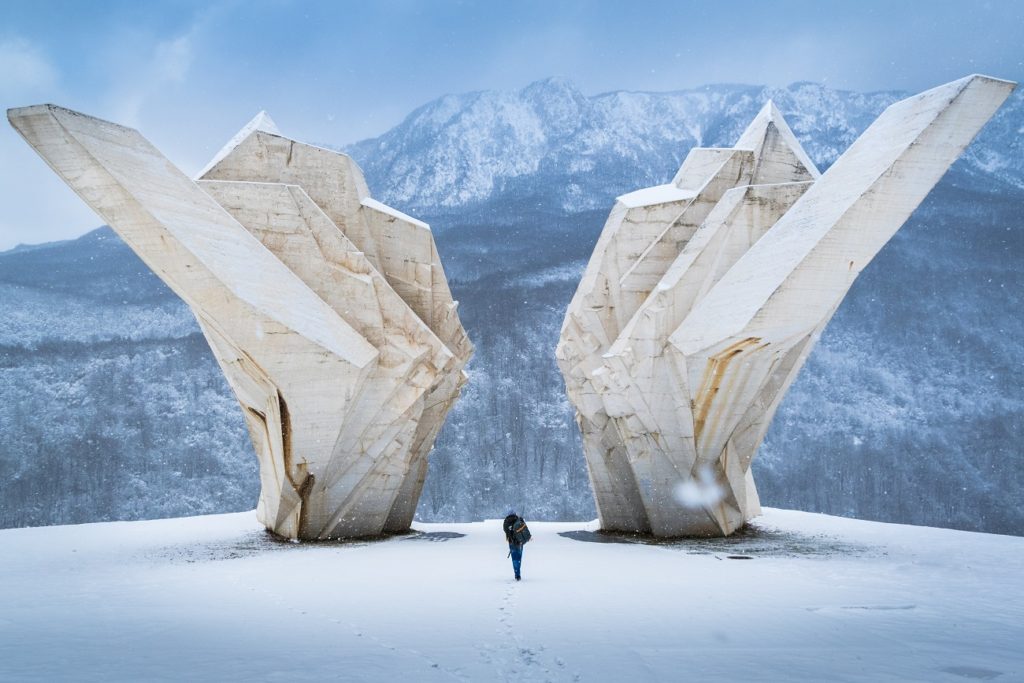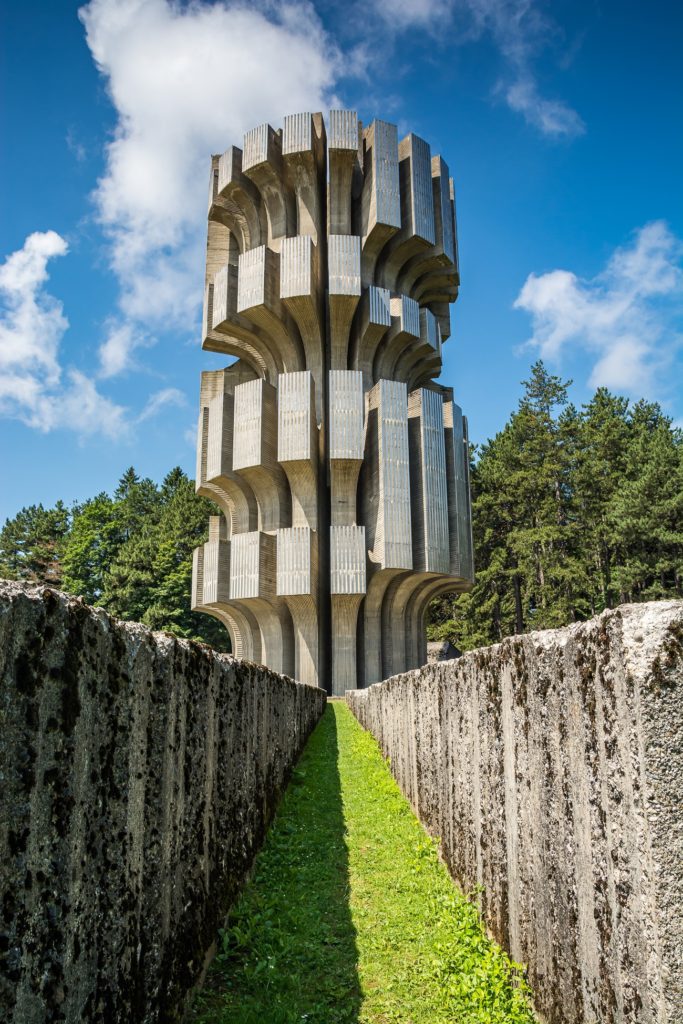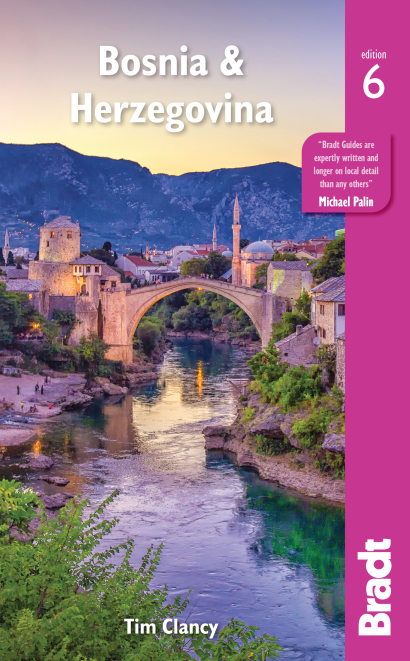Scattered across former Yugoslavia are an abundance of abstract war memorials (dubbed by many as spomeniks, meaning ‘monuments’ in Serbo-Croatian) built between the 1960s and 1980s, some financed by the Yugoslav government, but most erected by municipalities, cultural institutions or other local organisations.
While it’s easy to write off these fantastical and futuristically shaped chunks of concrete and steel as leftover remnants of a bygone era, many of which stand in various stages of decay or outright destruction, the reality is that they were built to commemorate some of the darkest memories of World War II in this region, from critical battles to sites of former concentration camps or mass executions.
Referred to as the National Liberation Struggle, it often goes unmentioned that this union of nations that would ultimately become the Federal People’s Republic of Yugoslavia in 1946 suffered the fourth-highest number of civilian casualties in Europe during World War II and had perhaps the strongest resistance movement capable of liberating the country without the help of the Allies.
The war memorials not only represent the losses during this difficult period of its history, but also the triumph over fascism by the united, multi-ethnic Partisans, and with that they hold an incredible significance that should not be overlooked.
As there was never an official inventory taken of every monument built during the second half of the 20th century in Yugoslavia, estimates place the number anywhere from 20,000 to 40,000. Today, only a small fraction remains due to the destruction or vandalism of many following the breakup of Yugoslavia in the 1990s, but a few of the finest examples can be found in Bosnia and Herzegovina.

Perhaps one of the most visited and revered is the Battle of Sutjeska Memorial Monument Complex in the Valley of the Heroes, located in the village of Tjentište in Sutjeska National Park. Completed in 1971, it serves as a memorial to the fighters and fallen soldiers of the Battle of Sutjeska that took place in the surrounding area between 15 May and 16 June 1943.
Within the complex is a magnificent 19m-high and 25m-wide monument designed by the Serbian sculptor Miodrag Živković. Comprised of white concrete fractal-walls that seem to defy gravity, the sheer size and views from its base are sure to impress any visitor.
Nearby is a strikingly angular remembrance museum called Spomen-Dom, or Memorial House, which is home to recently restored frescoes by Croatian artist Krsto Hegedušić and some 7,000 wall inscriptions of the names of the battle’s victims.
The impressive Monument to the Revolution found in the Mrakovica area of Kozara National Park is also a sight to see and is dedicated to the Partisan fighters, fallen soldiers and civilian victims of the Kozara Offensive, which took place in the spring of 1942. The 33m-high monument is a cylindrical monolith designed by Macedonian artist Dušan Džamonja.

Behind it sits a memorial wall with the names of 9,921 fallen Partisan soldiers, perhaps one of the largest inscribed lists of its kind in eastern Europe.
Of the 20 or so monuments in BiH, others worth mentioning that are in varying states of condition are: Garavice Memorial Park of the Victims of Fascist Terror in Bihać; Bratunac Memorial Park in Bratunac; Monument to the Fallen Partisan Detachment in Zenica; and the Partisan Memorial Cemetery in Mostar.
For more detailed information on the architects and history of each spomenik, you can visit spomenikdatabase.org.
